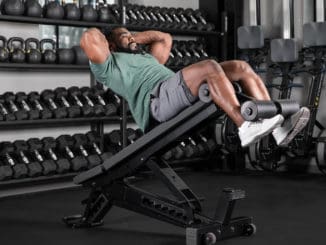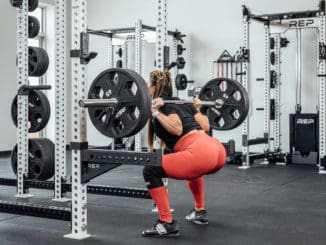Before investing in quality and expensive barbells, understanding your barbell is the first step to consider. This way, you will be acquainted with the parts of the Olympic barbell, their purpose, and the kinds of features you should be getting for your best lifting experience.
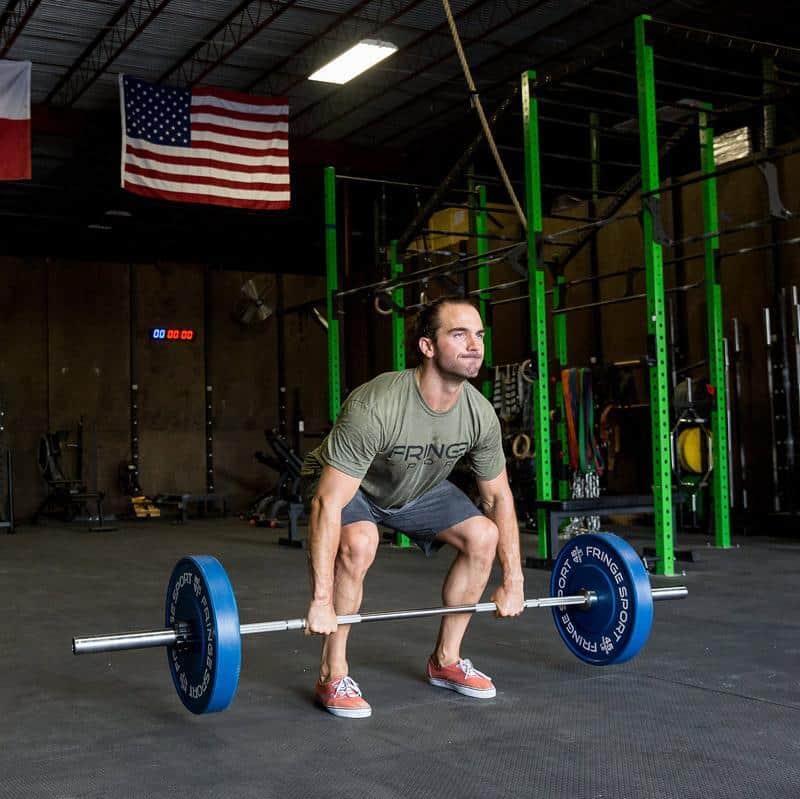
Let’s take a tour through the different parts of the barbell, and make sure we understand all the features and options for each. First stop – the shaft.
We’re talking about Olympic barbells here – the big-boy barbells that have a 2″ diameter sleeve to accommodate Olympic sized plates. We’re not discussing the standard barbell – which is common in your local sporting goods store. That bar has only a 1″ sleeve diameter and doesn’t fit very much weight.
Shaft
The shaft is the main body of the bar or the bar itself. Whether you are using it for the Olympics or powerlifting, the material of the bar should be durable and have the right amount of flex (or whip) as per the exercise movement you are doing. Most barbells are created with some type of steel. Superior and more expensive barbells are often made with stainless steel.
There’s two key questions to address around the shaft of the barbell:
- What is it made out of? (the kind of steel)
- What diameter is the shaft?
One of the most critical components of a bar is its high flexibility which guarantees it will keep its straightness during repeated heavy lifting. It is important to note that just because a bar is strong doesn’t mean it is suitable for lifting—it should also be flexible.
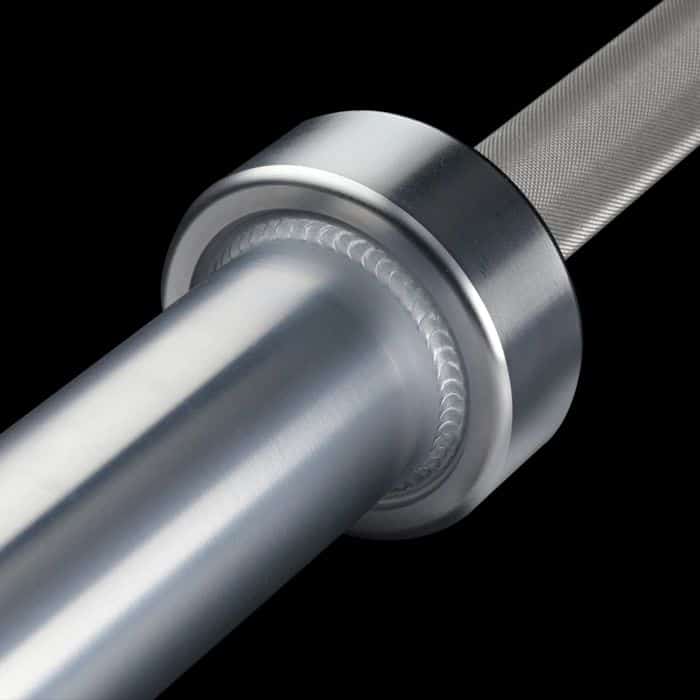
The terms tensile strength and yield strength are commonly heard in the world of barbells.
Yield Strength is the amount of stress at which a material will deform permanently – think a bent barbell, in this case.
Tensile strength, on the other hand, is the maximum amount of stress at which a material will break. Ever seen a broken barbell? It’s not common with high-quality barbells like we are discussing here, but certainly can happen with cheap barbells of questionable origin or materials.
Both of these things are measured as pounds Per Square Inch (or PSI). Barbells with a high PSI are stronger, can support bigger loads, and will last longer. Generally, it would help if you will look for a bar with a PSI of 150,000 or higher.
Yield strength is tested statically by adding weight to each end of the barbell. What influences the rating a bar receives? The two main factors are the quality of the steel used and the diameter of the shaft. Different types of bars have different shaft diameters. For instance, the standardized Olympic barbells used for Olympic competition have different diameters for men and women—for men, it is typically 28mm, while the ones for women are 25mm.
(The diameter is smaller for women because generally speaking they have smaller hands and therefore it’s easier to maintain a secure grip on a skinnier bar.)
Powerlifting bars are generally 29mm across the board. The diameter of the shaft is critical because it affects the whip, which is how much the bar will bend or twist under heavy loads. If you lift a barbell with a lot of whip, the weight on the bar will first cause it to bend, and then the bar will fight to return straight and bring the weight with it.
But, there are also bars in-between – a so-called dual-purpose bar may have a diameter somewhere in between 28 and 29mm. These bars can be a great choice for a CrossFit style functional fitness workout.
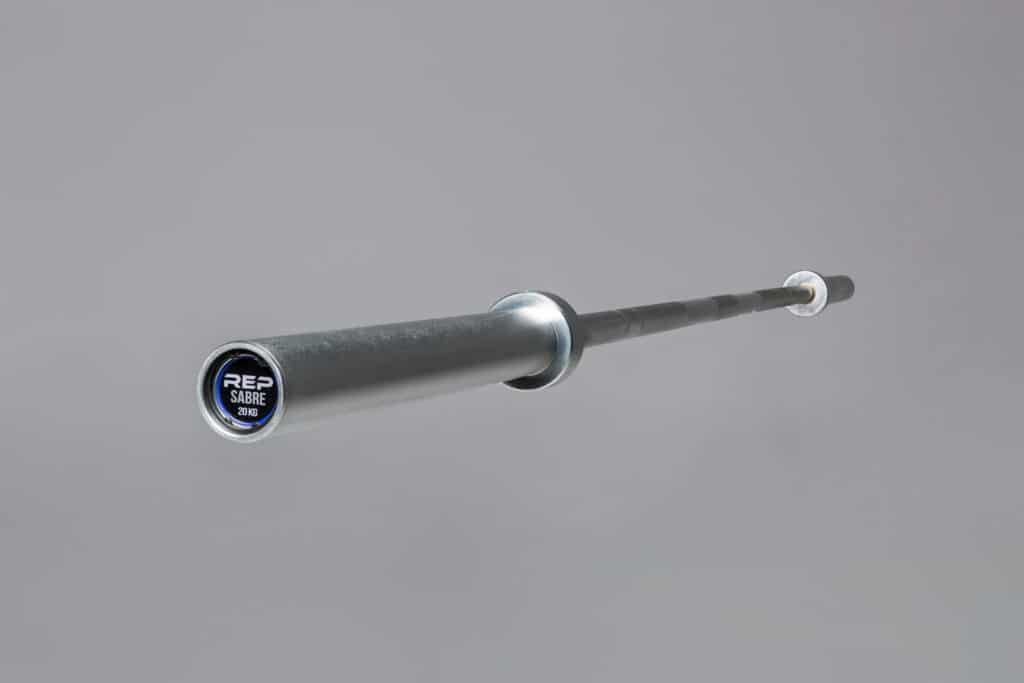
Barbells with smaller diameters generally have more whip- there’s less steel to resist the inertia of the weight plates.
Is that a bad thing? Not necessarily.
A barbell with a high whip can create momentum within the lift. The momentum is formed through the barbell, not through the lifter. This is helpful during very heavy Olynmpic lifts like the “clean and jerk” or the snatch.
Low or less whip is beneficial for powerlifters.
Barbell Weight
Barbells usually weigh 44 pounds for men (20 kg) and 33 pounds for women (15kg) – if rated in kilograms.
Otherwise you’ll find 45 pounds is common.
Knurling
Barbell knurling is the crosshatch pattern on the shaft of Olympic barbells and is a vital factor when choosing a barbell. It is designed to increase friction between your hands and the bar to improve grip. Understanding your training style and goals helps determine which knurling is right for you because knurling enhances your grip.
If you are into CrossFit training with high reps, aggressive knurling will detract from your grip because it will sooner or later begin to hurt. Or if you are into powerlifting, passive knurling will detract from your grip because it doesn’t have enough bite. Knurling should be comfortable for the whole workout to be bearable and effective.
Barbells are unique, and each one feels different because their knurling is different in depth, shape, density, and coating. There are three types of barbell knurling, and each one has advantages and disadvantages depending on your lifting approach, training volume, rep methods, and general preferences.
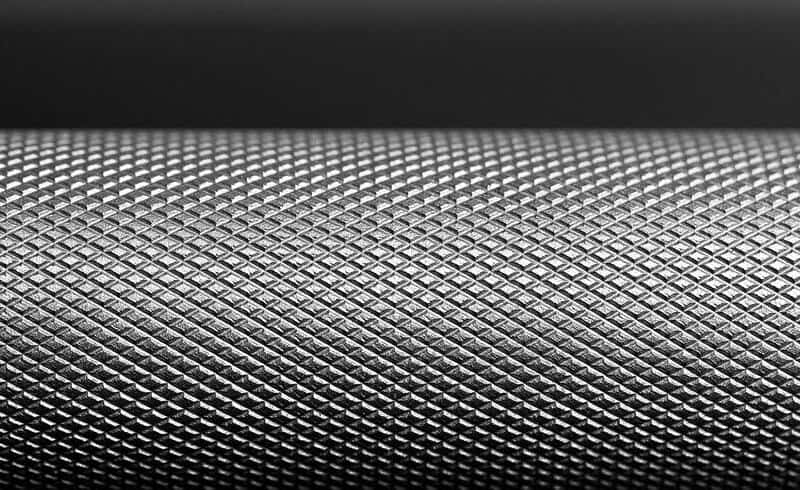
1. Hill Knurl
It is a pattern of sloped, flat-topped diamonds. The hill knurl is the most typical pattern and can be easily found anywhere. This is the most passive barbell knurling and is typically found on training bars, multipurpose bars, and some specialty bars. It is shallow and not pressed deeply into the shaft. The hill knurl is recommended for beginners and those who train with high reps as they are hand-friendly. One disadvantage of this knurling is that it can easily slip out of your hands, especially when your hands get sweaty. You can use chalk or lifting straps to avoid this.2. Volcano Knurl This knurling is ideal for all training styles and is found on weightlifting bars, multipurpose bars, powerlifting bars, and some specialty bars. It has a finely cut knurl with more mountain peaks and bridges the gap between passive (hill knurl) and aggressive (mountain knurl). The volcano generally has prominent craters on each point, and each crater forms four contact points within each point to increase the surface area in hand. The volcano knurling is recommended for most lifters because it is well-balanced and accessible. You can use it in various movements and rep/volume schemes.

3. Mountain Knurl Also known as the pyramid knurl, the mountain knurl is the most aggressive knurling and is ideal for advanced lifters training lower reps and heavier weights. It has notable points resembling mountains, and the mountainous pattern provides a single, more focused contact point. This knurling is designed for slow, low-rep powerlifting movements where the bar sticks to your hand and back when doing squats. The mountain knurl is recommended for advanced lifters who train in the 1-3 rep range. One disadvantage of this knurling is it is harder to re-center a loaded bar on your J-cups because the knurl will grip and tear up the UHMW liners of your J-cups.
Center Knurl Some bars have center knurl, while others don’t. Powerlifters prefer the center knurl because powerlifting needs extra traction between themselves and the barbell. The center knurl offers more stability and keeps the barbell from slipping. It provides extra bind and no slippage when they put the barbell on their backs to squat. But if you are a CrossFitter or a WOD-er, a center knurl will only hurt your collarbones and upper shoulder blades.
Sleeves
The sleeves are the pieces on the outer part of the bar that holds the plates. The sleeve diameter is virtually always 2″ in diameter and is essential because 99% of plates are made to fit a standard bar. Olympic barbells have rotating sleeves that are two inches in diameter, and some powerlifting barbells may have 1-inch sleeves.
The diameter of the sleeves impacts the type of plates you will load on them. Olympic barbells have spinning sleeves to decrease the risk of injury during fast hand transitions, like when performing during a clean and jerk. Sleeves are connected to the barbell using bushings or bearings to allow the sleeves to spin independently from the rest of the barbell.

Most bars have smooth sleeves. For instance, the American Barbell SS Comp’s sleeves are made from aircraft-grade hardened chrome and are smoothly polished without ridges. This smooth finish takes more time to complete than the traditional ribbed finish that most barbells come with.
Some have added small grooves, also known as ribbing, on the Olympic bar sleeves. These little grooves keep plates in place if you don’t have or don’t want to use collars.
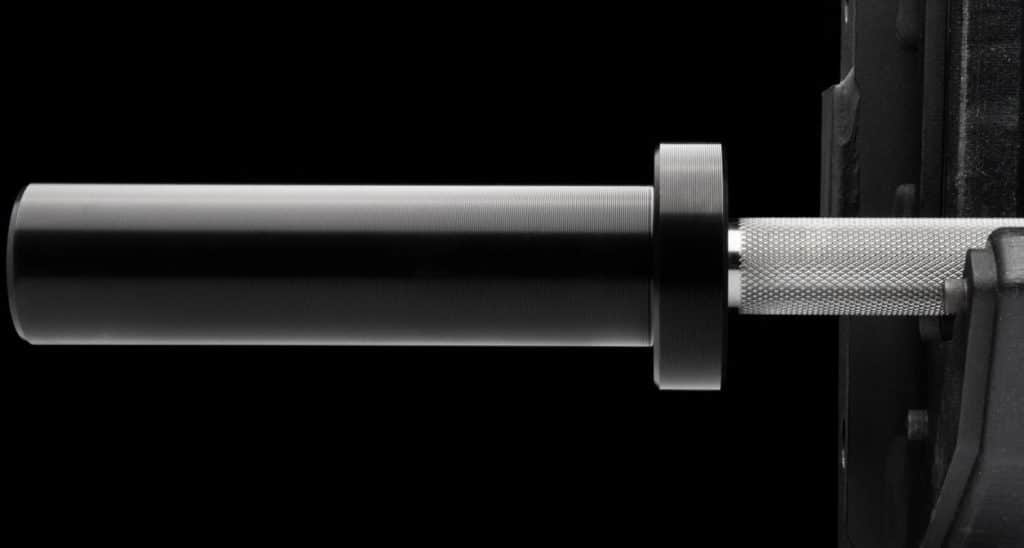
The grooves sleeves are used chiefly on general-purpose bars, and lifters performing cleans or snatches benefit from them because of the repeated dropping of the bar from overhead. If you are a powerlifter, you usually do three movements and complete one rep at a time. It would be best to have aggressive knurling to max out and have the best grip possible on the bar.
The finish of the bar matters as it can affect the depth and aggressiveness of the knurling. A chrome-plated bar is less aggressive on the hands and offers protection against rust. This is because the knurling is cut, and the bar is put into a bath. The bath will then deposit chrome onto the shaft and into the knurling.
Bushings vs Bearings
Bushings and bearings primarily reduce the friction produced when two moving components interact, decreasing the energy needed to set them in motion and restraining wear on the components. Though they have the same function, each is best fitted for use in different operating and environmental cases.
Bushing barbells are usually utilized for heavy or slower lifts, such as powerlifting movements like squats, benches, and deadlifts. The Power Bar from Fringe Sport is renowned for powerlifting because of its aggressive knurl for good grip during heavy lifts. As a single component, bushings have the edge over bearings in the assembly process and are cheaper.
Bushing barbells that use self-lubricating bronze bushings are made to last, and the shaft’s steel impacts the softer metal of the brass. They are self-lubricating to help the bushings spin around the bar and provide quieter operation than most bearings. A bushing bar usually has one bushing near the collar and another at the other end of the sleeve on the same side.
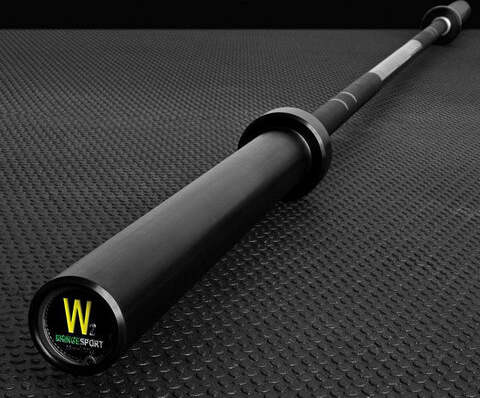
Now let’s talk about the bearings. Bearing barbells are commonly used for faster lifts, like the lifts executed in Olympic lifting. The quicker movements to the chest or overhead make a bearing bar perfect for these kinds of lifts like clean & jerk or snatches. Fringe Sport’s Wonder Bar, Olympic Weightlifting Bar, and Hybrid Bar all come in a bearing version. The Hybrid Bar is a fantastic option to swap between fast and slow lifts because the bearings will play nicely with your slow lifts.
These bearing barbells from Fringe Sport have high precision needle bearing cartridges made of steel and plenty of bearings inside shaped like needles for a super fast spin. A needle-bearing bar commonly contains one cartridge near the collar and one at the other end of the sleeve on the same side. But some more expensive bearing barbells have four cartridges in each sleeve to help the spin rotate quickly.

But regardless of the number of cartridges a bar has, a bearing bar will always spin faster than a bushing bar. The bearing costs roughly six to ten times more than bushings. In choosing between bushings and bearings, consider the smoothness of operation, velocity and loading, maintenance, operating noise, and budget.
Coatings and Finishes
A barbell’s coating plays a significant role and is one of the most critical factors in choosing a bar. There are different barbell coatings and finishes, but the essential things to consider when selecting these factors are how the finish feels in your hands and how well it protects your barbell against corrosion. There are three primary kinds of barbell finishes:
No Coating Stainless steel and bare steel are examples of raw finishes that deliver the best feeling because they don’t interrupt the knurling.
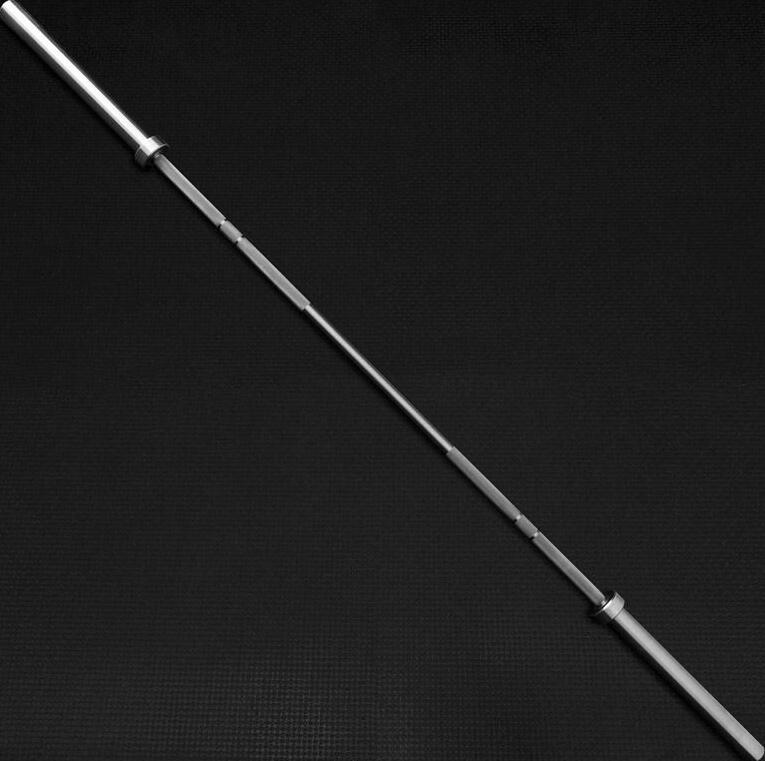
Conversion Coating Black oxide is the most typical example of a conversion coating. This finish is applied through alkaline baths, rinses, and hot or cold treatments to set the finish. The texture of a conversion coating is impressive and the same as bare/stainless steel. Conversion coatings don’t interfere with the knurling because of minimal build-up.
Applied Coating This includes Cerakote, E-coat, chrome, zinc, and powder coat. They are applied over the bar and fill in some of the knurl depth. As a result, these finishes don’t produce the same raw texture.
To name the specific coatings and finishes, here are some and their pros and cons.
Stainless Steel Stainless steel delivers a classic and elegant look. It is expensive and has the most superior barbell finish. It provides a raw feeling, so the knurl shines without conflict. It is similar to bare steel and more prominent than zinc. It is excellent when it comes to fighting oxidation and has minimal maintenance. With its rust-fighting qualities, You can be sure it will continue to look great after several uses because of its rust-fighting attributes.
Cerakote With reliable benefits, Cerakote is another superior coating. Next to stainless, barbells coated in Cerakote were introduced by American Barbell and have become the most prevalent barbell coatings because of their oxidation resistance and color options. Next to stainless, Cerakote fights rust well, and the salt spray testing showed that Cerakote could last as much as 100x longer than hard chrome, black zinc, etc. Cerakote also provides different color options if you want colorful barbells to match your personality.
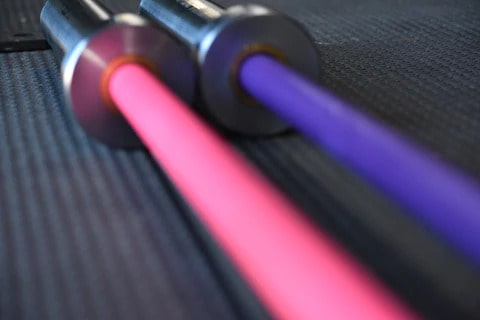
Hard Chrome Hard chrome is affordable, feels okay, and resists rust better than some, making it the most famous and available barbell coating. It rovides a classic steel look and usually comes in a glossy, matte, and black finish. It is stickier than zinc and performs well in accepting chalk. Though it can still fight rust, hard chrome is not good in humid environments and will eventually have surface rust.
Zinc This coating is somewhat similar to hard chrome but is rather inferior. It is relatively good at fighting rust and needs chalk sooner. Zinc comes in two variations—bright zinc and black zinc. Bright zinc delivers a silver, mirror-like charm, while black zinc is dark.
E-coat E-coat is first introduced by Rogue Fitness and is a long-lasting finish with robust corrosion benefits and a friendly price point. It is an electronically-applied paint coating with a slippery finish and takes chalk relatively well. It has a pleasant corrosion resistance and is favored in the automotive, machinery industries, and farming because of its durability.

Black Oxide This coating is cost-effective and feels excellent. Aside from its raw feel, black oxide also doesn’t intrude with knurl depth. The downside of this coating is its inability to fight rust. Though beautiful out of the box, over time, the finish will show some rusting and can quickly thin down.
Bare Steel It is entirely raw and the cheapest option. It has a great texture and holds chalk well but is not so good when it comes to oxidation resistance. It is prone to rust, particularly in humid environments.
Buyer’s Guide to Barbells – Olympic Barbell – In Summary
That’s our advice regarding Buyer’s Guide to Barbells – Olympic Barbell.
Buying a barbell is a significant investment, and you want your money to go a long way. We hope this guide will help you choose the features (for instance, the coating and finish) you will get for your barbell. With just a barbell, you can do plenty of total body exercises that target your chest, shoulders, biceps, back, quads, and abdominals for a strong and toned body. Happy lifting!
Find out about other types of barbells for the gym.
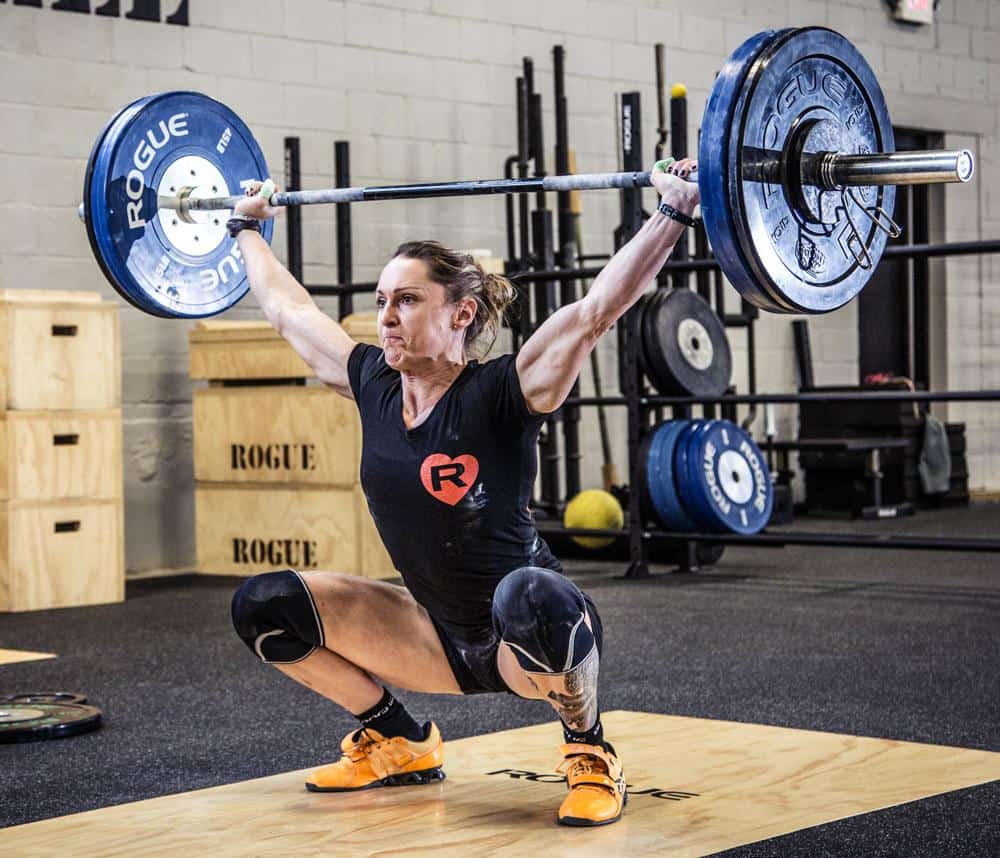
Photo Credits
Product photos on this page are property of the manufacturers.
This website is not affiliated or associated with CrossFit, Inc. CrossFit is a registered trademark of CrossFit, Inc.
Affiliate Disclaimer
We are an affiliate of various manufacturers and vendors that sell this gym and training equipment. If you buy clothing or other training gear after clicking the links in this article, we receive a small commission at no extra cost to you. This helps us to bring you in-depth information and content on these great training products.

Tim is the founder of FitAtMidlife.com – an avid gym rat for 30+ years, he’s a reviewer of many, many shoes – and founder of the Speed Bag Gathering – the world’s only gathering of speed bag punching enthusiasts. See more gym reviews at Tim’s YouTube channel.

